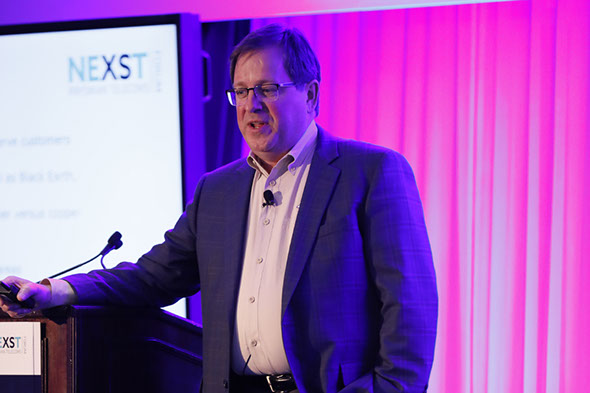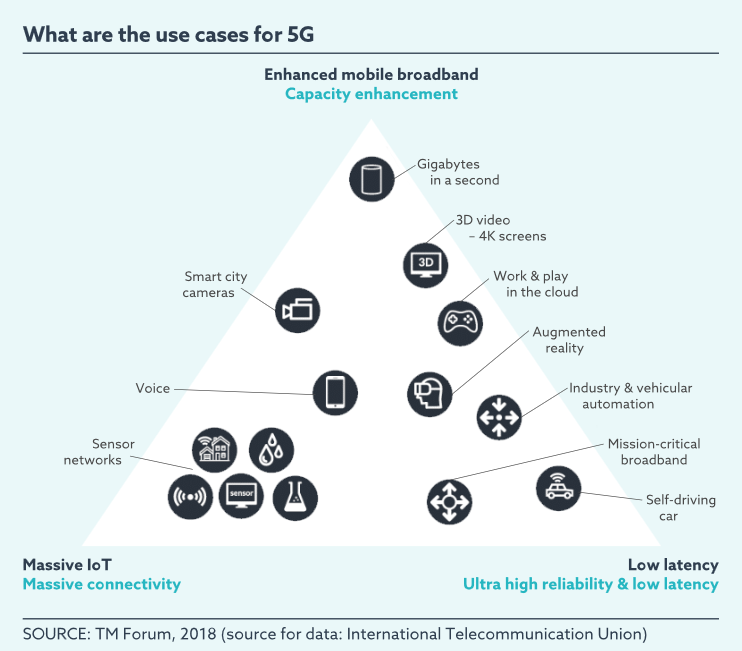FTTH & 5G: friends or foes?

Moore’s Law is a familiar concept that claims that the number of transistors on a silicon chip doubles every two years, bringing an increase in computing performance. Ever since the law came into being 50 years ago, its prediction has proven to be correct.
Moore’s Law is a familiar concept that claims that the number of transistors on a silicon chip doubles every two years, bringing an increase in computing performance. Ever since the law came into being 50 years ago, its prediction has proven to be correct.

Ken Paker
CTO AT TDS TELECOM
Nielsen’s Law takes a similar approach to network speeds, claiming high-end broadband bandwidth will grow 50% every year. That means 57x compound growth in capacity over the course of a decade. Since Jakob Nielsen formulated his law in 1998, it has proven to be correct. However, there might be a point at which Nielsen’s law flattens out and the capacity no longer increases. Can technology keep up with the advances suggested by Nielsen’s law? And will Fixed Wireless Access - or FWA - based on 5G help meet the fast-growing demand for bandwidth?
FWA provides internet access by (partially) using wireless mobile network technology instead of fixed lines. However, to date mobile network technology hasn’t been capable of providing speeds or latency levels comparable to those of fiber broadband. A new generation of FWA using 5G network technology should change this. Research by Market Insights state the 5G FWA market may grow 84% between 2019 and 2025 and may eventually be worth more than $40 Billion. This report also estimates that 5G FWA will reduce the initial cost of establishing ‘last-mile’ connectivity by as much as 40% compared to a fiber.
So is 5G FWA an alternative to rolling out fiber? When considering the potential impact of 5G FWA, we need to answer a number of important questions. What share of the overall broadband market will take up fixed wireless products? What is the topology/geography that will be covered? Over what time horizon will 5G FWA be fully deployed? We can be sure that the impact will not be equal across geographies and incumbent access technologies.
What’s more, 5G Fixed Wireless Access won’t be the only option available. FTTH with WiFi6 (802.11ax) will be a tough competitor for 5G fixed wireless. It offers up to 40% higher peak data rates and extends battery life for single client devices, increases network efficiency. In dense applications, Wi-Fi 6 can provide up to four times better wireless performance than to Wi-Fi 5 (802.11ac). This is a huge benefit considering the rise of the Internet of Things, cloud computing, smart cities and so on. Wi-Fi 6 will be compatible with 2.4 GHz and 5GHz and the 1GHz and 6GHz bands that are to be introduced.
Today, telecom businesses and providers focus on global customers, but in the future, markets will be far more vertically oriented, and they’ll need to change their approach. 5G and digital technologies will be essential for servicing these markets. In short, it is essential to stay focused on the use cases driving the digital transformation. The core of 5G will be provided by digital transformation of the service provider. 5G radio access, is simply one more form of broadband access, and not a complete solution in itself. 5G Wireless Access may complement fiber builds, but will not replace these directly. Fiber’s main benefits are still higher capacity and low latency Therefore, the industry shouldn’t be looking for a single solution, but needs to stay focused on the bigger picture of digital transformation!






